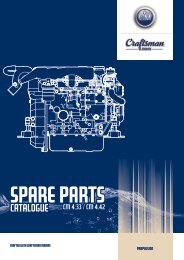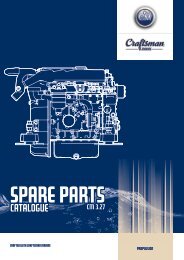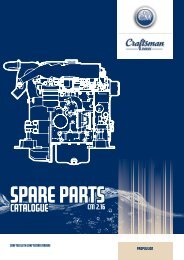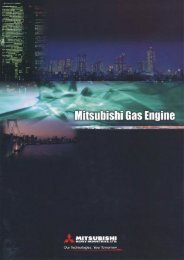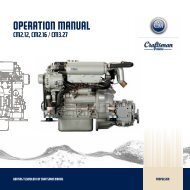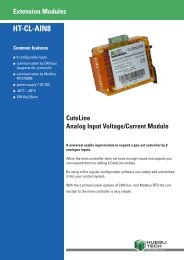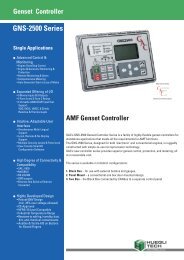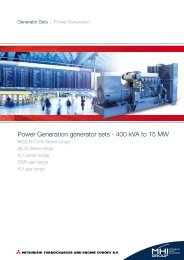ESD-2200 Series Speed Control Unit
ESD-2200 Series Speed Control Unit
ESD-2200 Series Speed Control Unit
- No tags were found...
You also want an ePaper? Increase the reach of your titles
YUMPU automatically turns print PDFs into web optimized ePapers that Google loves.
Technical InformationSYSTEM TROUBLESHOOTINGSystem InoperativeIf the engine governing system does not function, the fault may be determined by performing thevoltage tests described in Steps 1 through 4. Positive (+) and negative (-) refer to meter polarity.Should normal values be indicated during troubleshooting steps, and then the fault may be withthe actuator or the wiring to the actuator. Tests are performed with battery power on and theengine off, except where noted. See actuator publication for testing procedure on the actuator.Step Terminals Normal Reading Probable Cause of Abnormal Reading1 E(-) & F(+) Battery Supply Voltage (12, 24, or 32 VDC) 1. DC battery power not connected. Check for blown fuse2. Low battery voltage.3. Wiring error.2 A(+) & B(-) 0-3.9 with speed trim1. <strong>Speed</strong> trim shorted or miswired.7.1-7.9 without speed trim2. Defective unit.3 C(+) & D(-) 1.0 VAC RMS min. while cranking 1. Gap between speed sensor and gear teeth too great.Check gap.2. Improper or defective wiring to the speed sensor.Resistance should be between 30 to 1200 ohms.3. Defective speed sensor.4 H(-) & E(+) 0.8-1.5 V while cranking 1. Wiring error to actuator.2. Defective speed control unit.3. Defective actuator.Unsatisfactory PerformanceIf the governing system functions poorly, perform the following tests.Symptom Test Probable FaultEngine overspeed 1. Do Not Crank. Apply DC power to thegovernor system.1. Actuator goes to full fuel. Then disconnect thespeed sensor wires. If actuator still at full fuelspeedcontrol unit defective. If actuator atminimum fuel position erroneous speed signal.Check speed sensor cable.Actuator does not energizefully while cranking.Engine remains below desiredgoverned speed2. Manually hold the engine at the desiredrunning speed. Measure the DC voltagebetween Terminals H(-) & E(+) on thespeed control unit.1. Measure the DC voltage betweenTerminals H(-) & E(+) on the speedcontrol unit. Should be 0.8 to 1.5 volts.If not:2. Momentarily connect Terminal E to H.The actuator should move to the fullfuel position.1. Measure the actuator output, TerminalsG & H, while running under governorcontrol.1. If the voltage reading is 1.0 to 1.5 VDC,a) SPEED adjustment set above desired speed.b) Defective speed control unit.2. If the voltage reading is above 1.5 VDC, actuatoror linkage binding.3. Set point of overspeed shutdown set too low.4. If the voltage reading is below 0.8 VDC, defectivespeed control unit.1. Replace the battery if weak or undersized.2. Actuator wiring incorrect.3. If voltage is less than 1.5V, SPEED set too low1. Actuator or battery wiring in error.2. Actuator or linkage binding.3. Defective actuator.1. If voltage measurement is with 1.5 volts or moreof the battery supply voltage level, then fuelcontrol restricted from reaching full fuel position.Possibly due to mechanical governor, carburetorspring, or linkage interference.2. If not, increase speed setting.2105 V1.0 17.06.2009 Page 5 of 8



